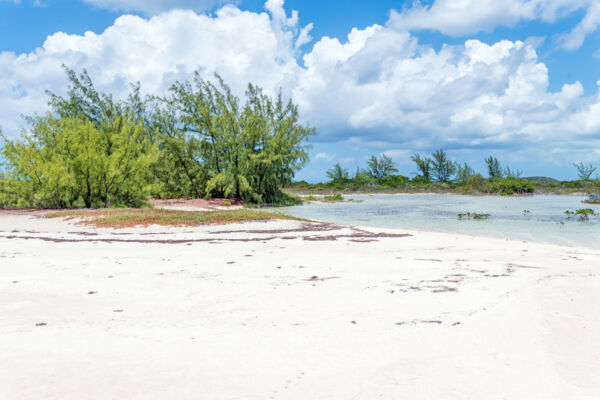Well Cay Turks and Caicos

Well Cay is a low-elevation and uninhabited wetland island, located between North Caicos and Middle Caicos. Well Cay is directly adjacent to Conch Cay, and it in fact can be nearly impossible to distinguish where one stops and the other begins.
Well Cay roughly has a collective area of 137 acres (55 hectares), much of which is submerged during high tide.
Lush seagrass beds can be found in the bay between Well Cay, Highas Cay, and Middle Caicos, and attract a plethora of sea creatures. It’s common to spot turtles, juvenile sharks, stingrays, barracudas, bonefish, starfish, and sometimes a large nurse shark. Snorkeling is quite good on the reefs at the outer fringes of the bay.
Although not extensive, Well Cay can be excellent for flotsam beachcombing. Small sandy beaches are found on the eastern and northern edges of the cay, and red mangroves line the remainder of the coast.

One of the best ways to explore near Well Cay is via kayak, due to the extensive shallows in the area. It’s possible to launch from Bottle Creek or near the North and Middle Caicos Causeway, and it’s best to budget spending an entire day to do so. Tour and charter boats do not typically visit the area, as the shallows throughout much of the East Bay Islands National Park and Bottle Creek Lagoon area prohibit all but the smallest vessels.
Birdlife
Well Cay, Conch Cay, Highas Cay, and the East Bay Islands National Park together are one of the finest birdwatching locations in the Turks and Caicos. Several factors likely account for this, including the general seclusion of the area, and the abundant shallows that are prime feeding grounds for an array of birds.
Sightings near Well Cay, Conch Cay, and Highas Cay tend to be more consistent than at many other birding spots in the Turks and Caicos. Fairly regular sightings include flamingos, West Indian whistling ducks, Cuban crows, several types of herons and egrets, ospreys, brown pelicans, and a full range of the smaller coastal birds.
